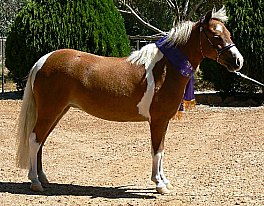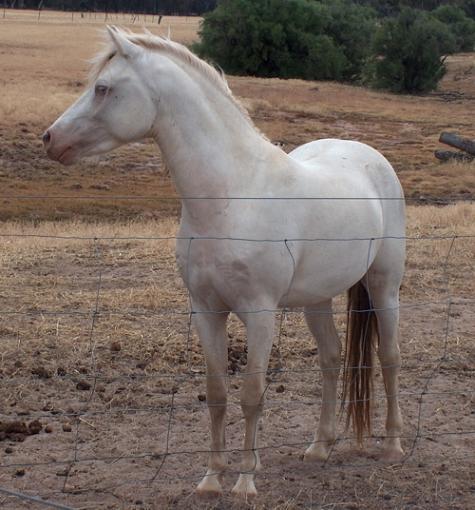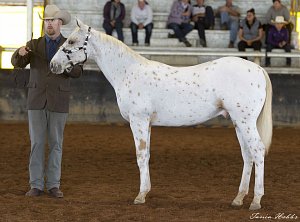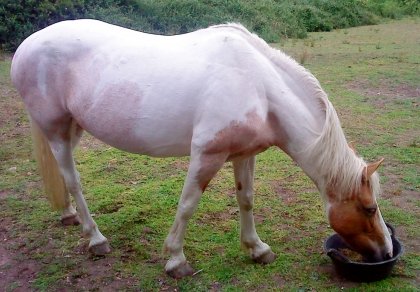DA Non-Solid Dilutes
Dilutes Australia Non-Solid Dilute register for studbook and non-studbook non-solid dilutes
(Replaces the DA Broken Coloured and Roan Dilute Register (DA BC & RD))
Registration and Membership Applications
A DA Non-Solid Dilute is a dilute horse or pony that does not conform to DA's regulations with respect to eye colour and white markings for SOLID dilute registration. This includes:
- pintos
- paints
- appaloosas
- sportaloosas or similar
- palouse ponies
- spotted ponies
- classic roans
- any other horse or pony that has white markings and / or eye colour that do not conform to DA's regulations for these characteristics for solid dilute registration.
  |
  |
Studbook DA NSD Register: mares & stallions - must have 2 registered
parents. Proof must be provided. Must PASS conformation
standards.
Non-studbook DA NSD Register: mares & stallions - either one or both parents are unknown / unregistered / unproveable. Must PASS conformation standards. These DA NSDs have full showing rights.
Gelding Register: may have either registered or unknown / unregistered / unproveable parentage. Must PASS conformation standards.
Ownership requirements:
The owners of all DA NSDs must be current financial members of the Company. Should an owner cease to be a financial member, the registration of all horses registered in his or her name will be suspended until such time as said owner rejoins the association, at which time the registration of all horses registered in his or her name will be reinstated
Standard of excellence:
A DA NSD shall meet the standards of conformation (breed characteristics being irrelevant) prescribed by the Board. To be considered for DA NSD STUDBOOK, NON-STUDBOOK or GELDING registration, a DA NSD must gain the required conformation marks prescribed by Board and fulfill the following:
- Carry any one, or combination of, the currently recognised
coat pattern genes (Tobiano, Frame, Splash, White Spotting, Sabino 1, Lp, Classic Roan) and express these genes to the
extent that their white markings and / or eye colour excludes them from registration as a
solid dilute. Note - a dilute horse or pony carrying a coat pattern gene which conforms to the company's regulations with respect to white markings and eye colour is eligible for registration as a solid dilute.
- Have white markings and / or eye colour which do not conform to the company's regulations with respect to white markings and eye colour.
History:
Introduced in May 2008 at the request of owners of broken coloured dilute horses and ponies, the BC & RD Register was originally called the BCD Register. It was a showing only register and carried no breeding rights. In August 2013 dilute roans were added to the register and the name changed to the DA Broken Coloured & Roan Dilute Register.
In June 2014 a new studbook register was introduced for dilutes with expressed (ie visible) coat pattern genes and dilutes with genes such as splash and sabino that had expressed as white markings or eye colour that do not conform to DA's regulations for solid dilute registration. The old BC & RD register was discontinued and horses registered in it were transferred either to the new DA NSD register in the case of the non-solid dilutes, upon lodgement of the required paperwork with the Registrar, or to the newly established Section 3 of the Ancillary register for Grey and Roan dilutes in the case of the roans.
Our state branches around Australia include classes for the register at their shows. Please note that DA NSDs are NOT permitted to be shown in solid dilute classes ie palomino, buckskin etc. This ruling extends to ONLINE shows.
Coat patterns - DA NSDs:
Dilutes Australia recognises all the currently known coat pattern genes and classic roan, and any combination thereof, for DA NSD registration.
Forms
Application for foal recording
